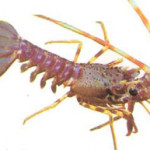
Identifying sharks in the wild is a great challenge! While scientists can spend weeks examining every detail of a species, divers may encounter a shark for only a few seconds or minutes. Many species look alike and one individual may not be identical to the next. There are, however, relatively few species in any one specific dive site and with some preparation and a little practice it is possible for all of us to recognise the more common and distinctive species. The key to successful shark identification underwater is a process of elimination, based on a mental checklist of the main features to look for in every animal encountered. One feature alone is rarely enough for a positive identification, so gather as much information as you can before drawing firm conclusions.
earthdive wants you to record sightings of sharks. That in itself is valuable. A total count of all species and the time duration of the count is important information in itself and you can record this data in the Global Dive Log. However, identifying the actual species is even more important. If you do not recognise a species, ask your buddy, dive leader or other divers in the group, who may have seen it also. Or, record unusual features like, needle sharp teeth, incredibly long tail, diamond-shaped open mouth or a flattened hammer-shaped head. All these observations are sufficiently distinctive to help us and others make an identification. Record these details in the notes section for each indicator.
Colour is also helpful – note the main background colours of both the upperside and underside as well as distinctive markings. The dorsal (back) fins can also tell us a lot. Do they have a broad or narrow base? Are they curved or upright? Are they falcate (sickle shaped)? Are the tips rounded or pointed? What is the background colour of the fins? Some species have very distinctive dorsal fins – the first dorsal of the oceanic whitetip, for instance, is huge,
rounded and conspicuously marked with a mottled white tip. One thing we are pretty sure of (unless the Global Dive Log proves us wrong!), is that all sharks are restricted in their range in one way or another. Whitetip reef sharks are only found in the Pacific and Indian Oceans (including the Red Sea), for example, while bull sharks are found virtually worldwide but only in tropical and sub-tropical waters. Caribbean reef sharks occur mainly around island reefs, whereas oceanic whitetip sharks are more common farther offshore in oceanic waters. In this way we can tell you which sharks you might encounter in the North American – Pacific – sub-tropical eco-region and some of these are listed below, but given the enormous diversity of species within the region, this list is not all-inclusive:
- Basking Shark Cetorhinus maximus
- Bigeye Thresher Alopias superciliosus
- Bluntnose Sixgill Shark Hexanchus griseus
- Bonnethead Sphyrna tiburo
- Broadnose Sevengill Shark Notorynchus cepedianus
- Copper Shark Carcharhinus brachyurus
- Dusky Shark Carcharhinus obscurus
- Leopard Shark Triakis semifasciata
- Oceanic Whitetip Shark Carcharhinus longimanus
- Pacific Sharpnose Shark Rhizoprionodon longurio
- Pacific Sleeper Shark Somniosus pacificus
- Salmon Shark Lamna ditropis
- Sandbar Shark Carcharhinus plumbeus
- Scalloped Hammerhead Sphyrna lewini
- School or Tope Shark (Vulnerable – IUCN) Galeorhinus galeus
- Shortfin Mako Isurus oxyrinchus
- Tiger Shark Galeocerdo cuvier
- Whale Shark (Vulnerable – IUCN) Rhincodon typus








Social Profiles